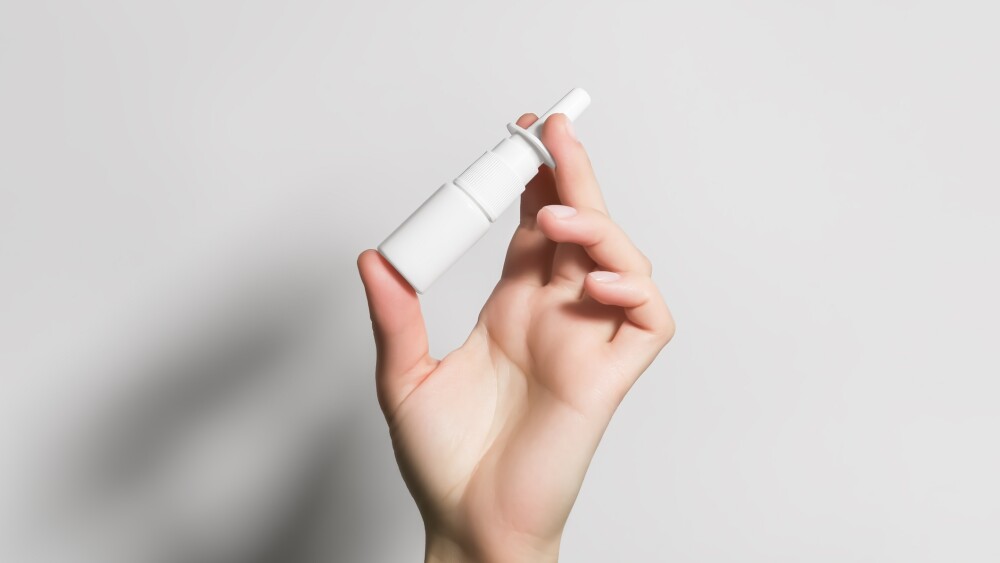Statistically significant results from the pivotal Phase III LINC-4 study demonstrate that Isturisa® provides rapid and sustained normalization of mean urinary free cortisol levels in the majority of patients.

Statistically significant results from the pivotal Phase III LINC-4 study demonstrate that Isturisa® (osilodrostat) provides rapid and sustained normalization of mean urinary free cortisol levels in the majority of patients. These data provide further evidence of the benefits of Isturisa® as an effective and well-tolerated oral treatment option for patients with Cushing’s disease.
LEBANON, N.J.--(BUSINESS WIRE)-- Recordati Rare Diseases announces that positive results from the Phase III LINC-4 study of Isturisa® have been presented at the Endocrine Society’s annual meeting.
Findings from LINC-4, the first Phase III study in patients with Cushing’s disease to include an upfront, double-blind, randomized, placebo-controlled period, demonstrate that Isturisa® provides rapid and sustained normalization of mean urinary free cortisol (mUFC) levels. This represents an important treatment goal that can reduce morbidity, improve quality of life and restore the life expectancy of patients with Cushing’s disease towards that of the general population.1
The Phase III LINC-4 study enrolled adult patients with persistent, recurrent or de novo Cushing’s disease who had mUFC >1.3 x upper limit of normal (ULN). Seventy-three patients received randomised treatment with Isturisa® or placebo (2:1) during the initial 12-week, double-blind, placebo-controlled period; 48 patients were included in the Isturisa® arm and 25 patients in the placebo arm. All patients received open-label Isturisa® after week 12 until the end of the core study (week 48).
The primary endpoint of the LINC-4 study was met: a significantly higher proportion of patients achieved normal mUFC levels with Isturisa® than with placebo at the end of the initial 12week placebo-controlled phase (77% vs 8%; P<0.0001). Median time to first controlled mUFC response (mUFC ≤ULN) was 35 days.
The key secondary endpoint was also met, with the majority (81%) of patients having normal mUFC levels at week 36. The rapid and sustained reductions in mUFC levels were accompanied by improvements in cardiovascular and metabolic-related parameters, including systolic and diastolic blood pressure and glycated hemoglobin (HbA1c) at both week 12 and the end of the core study.
“The exciting data presented further emphasize the efficacy and tolerability of Isturisa® and build on the positive findings from the LINC 3 pivotal study, which was published in The Lancet Diabetes & Endocrinology in July 2020. Importantly, treatment with Isturisa® was effective in normalizing mUFC levels in the majority of patients from the start of treatment, improved clinical signs of hypercortisolism and cardiovascular-related risk factors, and was well tolerated,” said Mônica Gadelha, MD, PhD, Professor of Endocrinology at Universidade Federal do Rio de Janeiro. “I feel privileged to present these additional important findings at the Endocrine Society’s annual meeting, which represent a meaningful step forward in the optimal management of patients experiencing this life-threatening, devastating disease.”
Isturisa® was well tolerated in LINC-4, further supporting the favorable safety profile established in previous studies.2 The most common adverse events (AEs) reported up to data cut-off were arthralgia (45%), decreased appetite (45%), fatigue (38%), nausea (37%) and headache (33%). Hypocortisolism-related AEs were reported in 27% of patients. Most hypocortisolism-related AEs were of mild or moderate severity, were managed with dose reduction, dose interruption, and/or additional therapy, and did not require discontinuation of Isturisa® treatment.
“We are delighted that the positive and statistically significant data from the LINC-4 study have been presented at the Endocrine Society’s annual meeting. These data add to the robust body of evidence supporting Isturisa® as an effective and well-tolerated treatment for patients with Cushing’s disease,” said Andrea Recordati, CEO. “Recordati is committed to improving the lives of patients with this serious yet underserved condition. On behalf of Recordati, I would like to thank all the patients, their families and carers, the investigators and the study collaborators who have contributed to LINC-4 and the Isturisa® clinical program.”
Isturisa® is indicated in the USA for the treatment of adult patients with Cushing’s disease, a rare and debilitating condition of hypercortisolism, for whom pituitary surgery is not an option or has not been curative.3,4
Important safety information for Isturisa®
Indications and usage
Isturisa® (osilodrostat) is a cortisol synthesis inhibitor indicated for the treatment of adult patients with Cushing’s disease for whom pituitary surgery is not an option or has not been curative.
Warnings and Precautions
- Hypocortisolism: Isturisa® lowers cortisol levels and can lead to hypocortisolism and sometimes life-threatening adrenal insufficiency. Lowering of cortisol can cause nausea, vomiting, fatigue, abdominal pain, loss of appetite, and dizziness. Significant lowering of serum cortisol may result in hypotension, abnormal electrolyte levels, and hypoglycemia.
Hypocortisolism can occur at any time during Isturisa® treatment. Evaluate patients for precipitating causes of hypocortisolism (infection, physical stress, etc). Monitor 24-hour urinary free cortisol, serum or plasma cortisol, and patient’s signs and symptoms periodically during Isturisa® treatment.
Decrease or temporarily discontinue Isturisa® if urinary free cortisol levels fall below the target range, there is a rapid decrease in cortisol levels, and/or patients report symptoms of hypocortisolism. Stop Isturisa® and administer exogenous glucocorticoid replacement therapy if serum or plasma cortisol levels are below the target range and patients have symptoms of adrenal insufficiency. After Isturisa® discontinuation, cortisol suppression may persist beyond the 4-hour half-life of Isturisa®. Please see section 5.1 of the full prescribing information.
Educate patients on the symptoms associated with hypocortisolism and advise them to contact a healthcare provider if they occur.
- QTc prolongation: Isturisa® is associated with a dose-dependent QT interval prolongation, which may cause cardiac arrhythmias. Perform an electrocardiogram (ECG) to obtain a baseline corrected QT (QTc) interval measurement prior to initiating therapy with Isturisa® and monitor for an effect on the QTc interval thereafter. Correct hypokalemia and/or hypomagnesemia prior to Isturisa® initiation and monitor periodically during treatment with Isturisa®. Use with caution in patients with risk factors for QT prolongation and consider more frequent ECG monitoring. Please see section 5.2 of the full prescribing information.
- Elevations in adrenal hormone precursors and androgens: Isturisa® blocks cortisol synthesis and may increase circulating levels of cortisol and aldosterone precursors and androgens. This may activate mineralocorticoid receptors and cause hypokalemia, edema and hypertension. Hypokalemia should be corrected prior to initiating Isturisa®. Monitor patients treated with Isturisa® for hypokalemia, worsening of hypertension and edema. Inform patients of the symptoms associated with hyperandrogenism and advise them to contact a healthcare provider if they occur. Please see section 5.3 of the full prescribing information.
Adverse reactions
- The most common adverse reactions (incidence >20%) are adrenal insufficiency, fatigue, nausea, headache, and edema
- To report SUSPECTED ADVERSE REACTIONS, contact Recordati Rare Diseases, Inc at 1-888-575-8344, or the FDA at 1-800-FDA-1088 or www.fda.gov/medwatch
Drug interactions
- CYP3A4 inhibitor: Reduce the dose of Isturisa® by half with concomitant use of a strong CYP3A4 inhibitor
- CYP3A4 and CYP2B6 inducers: An increase in Isturisa® dosage may be needed if Isturisa® is used concomitantly with strong CYP3A4 and CYP2B6 inducers. A reduction in Isturisa® dosage may be needed if strong CYP3A4 and CYP2B6 inducers are discontinued while using Isturisa®
Use in specific populations
- Lactation: Breastfeeding is not recommended during treatment with Isturisa® and for at least 1 week after treatment
Please refer to the full prescribing information at www.isturisa.com/pdf/isturisa-pi.pdf
About Cushing’s disease
Cushing’s disease is a form of Cushing’s syndrome, in which chronically elevated cortisol levels is triggered by a pituitary adenoma secreting excess adrenocorticotropic hormone (ACTH).5 It is a rare, serious and difficult-to-treat disease that affects approximately one to two patients per million per year. Prolonged exposure to elevated cortisol levels is associated with considerable morbidity, mortality and impaired quality of life as a result of complications and comorbidities.1 Normalization of cortisol levels is therefore a primary objective in the treatment of Cushing’s disease.6
About LINC-4
LINC-4 is a multicenter, randomized, double-blind, 48-week study with an initial 12-week placebo-controlled period to evaluate the safety and efficacy of Isturisa® in patients with Cushing’s disease. The LINC-4 study enrolled patients with persistent or recurrent Cushing’s disease or those with de novo disease who were ineligible for surgery; 73 randomized patients were treated with Isturisa® (n=48) or placebo (n=25). The primary endpoint of the study is the proportion of randomized patients with a complete response (mUFC ≤ULN) at the end of the placebo-controlled period (week 12). The key secondary endpoint is the proportion of patients with mUFC ≤ULN at week 36.
About Isturisa®
Isturisa® is a cortisol synthesis inhibitor that works by preventing 11β-hydroxylase, an enzyme responsible for the final step of cortisol biosynthesis in the adrenal glands, from being created. Isturisa® is available as 1 mg, 5 mg and 10 mg film-coated tablets. Please see the prescribing information for detailed recommendations for the use of this product.4 In March 2020, the FDA granted marketing authorization for Isturisa® in the USA. For more information, visit www.isturisa.com.
1. Pivonello R et al. Lancet Diabetes Endocrinol 2016;4:611-29.
2. Pivonello R et al. Lancet Diabetes Endocrinol 2020;8:748-61.
3. Ferriere A, Tabarin A. Best Pract Res Clin Endocrinol Metab 2020;34:101381.
4. Isturisa® prescribing information. March 2020.
5. Lacroix A et al. Lancet 2015;386:913-27.
6. Nieman LK et al. J Clin Endocrinol Metab 2015;100:2807-31.
About Recordati Rare Diseases Inc.
Recordati Rare Diseases Inc. is a biopharmaceutical company committed to providing often-overlooked orphan therapies to underserved rare disease communities in the USA. Recordati Rare Diseases is a part of the Recordati Group, a public international specialty pharmaceutical company committed to the research and development of new specialties with a focus on treatments for rare diseases.
The mission of Recordati Rare Diseases is to reduce the impact of extremely rare and devastating diseases by providing urgently needed therapies. We work side by side with rare disease communities to increase awareness, improve diagnosis and expand availability of treatments for people with rare diseases.
The company’s US corporate headquarters is located in Lebanon, NJ, with global headquarter offices in Milan, Italy.
For a full list of products, please click here: www.recordatirarediseases.com/us/products
About the Recordati group
Recordati, established in 1926, is an international pharmaceutical group listed on the Italian Stock Exchange (Reuters RECI.MI, Bloomberg REC IM, ISIN IT 0003828271), with a total staff of more than 4300, dedicated to the research, development, manufacturing and marketing of pharmaceuticals. Headquartered in Milan, Italy, Recordati has operations throughout the whole of Europe (including Russia and Turkey), North Africa, the USA, Canada, Mexico, some South American countries, Japan and Australia. An efficient field force of medical representatives promotes a wide range of innovative pharmaceuticals, proprietary and under license, in a number of therapeutic areas, including a specialized business dedicated to treatments for rare diseases. Recordati is a partner of choice for new product licenses for its territories. Recordati is committed to the research and development of new specialties with a focus on treatments for rare diseases. Consolidated revenue for 2020 was €1448.9 million, operating income was €469.0 million, and net income was €355.0 million.
Statements contained in this release, other than historical facts, are ‘forward-looking statements’ (as such term is defined in the Private Securities Litigation Reform Act of 1995). These statements are based on currently available information, on current best estimates, and on assumptions believed to be reasonable. This information, these estimates and assumptions may prove to be incomplete or erroneous, and involve numerous risks and uncertainties, beyond the Company’s control. Hence, actual results may differ materially from those expressed or implied by such forward-looking statements. All mentions and descriptions of Recordati products are intended solely as information on the general nature of the company’s activities and are not intended to indicate the advisability of administering any product in any particular instance.
PP-IST-US-0096
View source version on businesswire.com: https://www.businesswire.com/news/home/20210323005071/en/
Company
Alan Erck
Vice President, Commercial Operations
(908) 377-9000
Email: erck.a@recordati.com
Media
Cassandra Dump
Pascale Communications for Recordati
(619) 971-1887
Email: cassy@pascalecommunications.com
Source: Recordati Rare Diseases Inc.
View this news release online at:
http://www.businesswire.com/news/home/20210323005071/en





